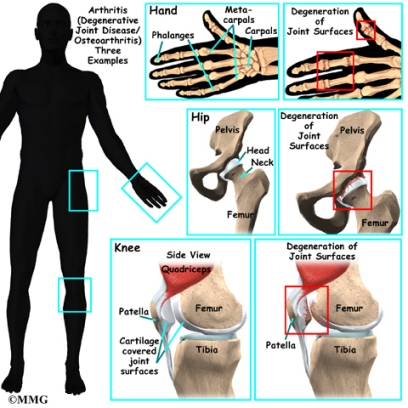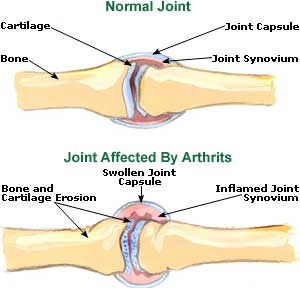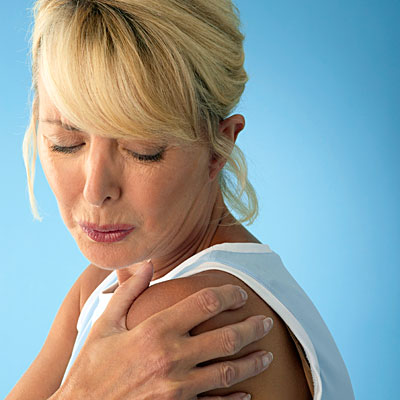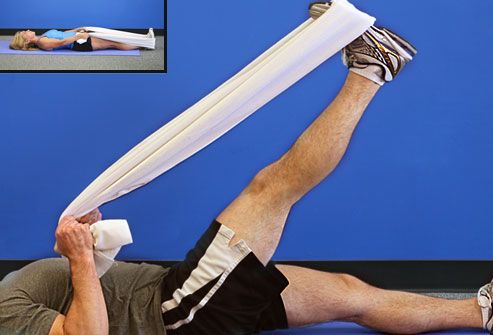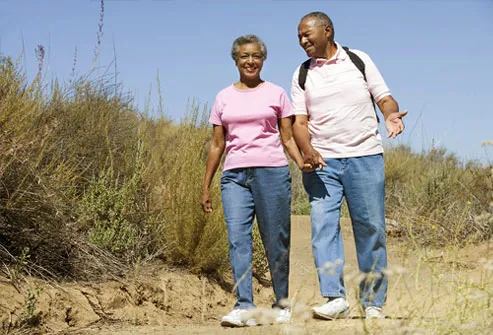Supplements
Supplement Guide: Avocado Soybean Unsaponifiables
A natural vegetable extract made from avocado and soybean oils
Supplement Guide: Black Currant Oil
Black currant seed oil is obtained from seeds of the black currant
Supplement Guide: Borage Oil
Oil from the seeds of the borage plant
Supplement Guide: Boswellia
See Indian Frankincense
Supplement Guide: Bromelain
Group of enzymes found in pineapple that break down protein.
Supplement Guide: Cat's Claw
Dried root bark of a woody vine that grows in the Amazon rain forests
Supplement Guide: Chondroitin Sulfate
A component of human connective tissues found in cartilage and bone
Supplement Guide: Curcumin
See Turmeric
Supplement Guide: Devil's Claw
A traditional herb used in South Africa
Supplement Guide: DHEA
An androgen steroid hormone naturally produced by the adrenal glands
Supplement Guide: DMSO
A colorless, sulfur-containing organic by-product of wood pulp processing
Supplement Guide: Evening Primrose
The seeds of a wildflower, containing gamma-linolenic acid (GLA)
Supplement Guide: Fish Oil
Oil from cold-water fish such as salmon, tuna, halibut and cod
Supplement Guide: Flaxseed
Seed of the flax plant, containing omega-3 and omega-6 fatty acids
Supplement Guide: Ginger
The dried or fresh root of the ginger plant
Supplement Guide: Ginkgo
Leaf of the ginkgo biloba tree, native to East Asia
Supplement Guide: GLA
Omega-6 fatty acid in evening primrose, black currant and borage oils
Supplement Guide: Glucosamine
Major component of joint cartilage; derived from the shells of shellfish
Supplement Guide: Indian Frankincense
Gum resin from the bark of the Boswellia tree found in India
Supplement Guide: Melatonin
A hormone produced by the pineal gland
Supplement Guide: MSM
Organic sulfur compound found naturally in fruits, vegetables, grains, etc.
Supplement Guide: Sam-e
A naturally occurring chemical in the body
Supplement Guide: St. John's Wort
The St. John’s wort plant is native to Europe and grows wild in the U.S.
Supplement Guide: Stinging Nettle
A stalk-like plant found in the U.S., Canada and Europe
Supplement Guide: Thunder God Vine
Root of a vine-like plant from Asia
Supplement Guide: Turmeric
A yellow powder ground from the roots of the lily-like turmeric plant
Supplement Guide: Valerian
The dried root of the perennial herb valerian
Causes
Arthritis involves the breakdown of cartilage. Cartilage normally protects a joint, allowing it to move smoothly. Cartilage also absorbs shock when pressure is placed on the joint, such as when you walk. Without the normal amount of cartilage, the bones rub together, causing pain, swelling (inflammation), and stiffness.
Joint inflammation may result from:
An autoimmune disease (the body's immune system mistakenly attacks healthy tissue)
Broken bone
General "wear and tear" on joints
Infection, usually by bacteria or virus
Usually the joint inflammation goes away after the cause goes away or is treated. Sometimes it does not. When this happens, you have chronic arthritis. Arthritis may occur in men or women. Osteoarthritis is the most common type. See: Osteoarthritis
Other, more common types of arthritis include:
Ankylosing spondylitis
Gonococcal arthritis
Gout
Juvenile rheumatoid arthritis (in children)
Other bacterial infections (nongonococcal bacterial arthritis)
Psoriatic arthritis
Reactive arthritis (Reiter syndrome)
Rheumatoid arthritis (in adults)
Scleroderma
Systemic lupus erythematosus (SLE)
Back to TopSymptoms
Arthritis causes joint pain, swelling, stiffness, and limited movement. Symptoms can include:
Joint pain
Joint swelling
Reduced ability to move the joint
Redness of the skin around a joint
Stiffness, especially in the morning
Warmth around a joint
Back to TopExams and Tests
The health care provider will perform a physical exam and ask questions about your medical history.
The physical exam may show:
Fluid around a joint
Warm, red, tender joints
Difficulty moving a joint (called "limited range of motion")
Some types of arthritis may cause joint deformity. This may be a sign of severe, untreated rheumatoid arthritis.
Blood tests and joint x-rays are often done to check for infection and other causes of arthritis.
Your doctor may also remove a sample of joint fluid with a needle and send it to a lab for examination.
Back to TopTreatment
The goal of treatment is to reduce pain, improve function, and prevent further joint damage. The underlying cause cannot usually be cured.
LIFESTYLE CHANGES
Lifestyle changes are the preferred treatment for osteoarthritis and other types of joint inflammation. Exercise can help relieve stiffness, reduce pain and fatigue, and improve muscle and bone strength. Your health care team can help you design an exercise program that is best for you.
Exercise programs may include:
Low-impact aerobic activity (also called endurance exercise)
Range of motion exercises for flexibility
Strength training for muscle tone
Physical therapy may be recommended. This might include:
Heat or ice
Splints or orthotics to support joints and help improve their position; this is often needed for rheumatoid arthritis
Water therapy
Massage
Other recommendations:
Get plenty of sleep. Sleeping 8 to 10 hours a night and taking naps during the day can help you recover from a flare-up more quickly and may even help prevent flare ups.
Avoid staying in one position for too long.
Avoid positions or movements that place extra stress on your sore joints.
Change your home to make activities easier. For example, install grab bars in the shower, the tub, and near the toilet.
Try stress-reducing activities, such as meditation, yoga, or tai chi.
Eat a healthy diet full of fruits and vegetables, which contain important vitamins and minerals, especially vitamin E.
Eat foods rich in omega-3 fatty acids, such as cold water fish (salmon, mackerel, and herring), flaxseed, rapeseed (canola) oil, soybeans, soybean oil, pumpkin seeds, and walnuts.
Apply capsaicin cream over your painful joints. You may feel improvement after applying the cream for 3-7 days.
Lose weight, if you are overweight. Weight loss can greatly improve joint pain in the legs and feet.
MEDICATIONS
Medications may be prescribed along with lifestyle changes. All medications have risks, some more than others. It is important that you are closely monitored by a doctor when taking arthritis medications.
Generally, over-the-counter medications are recommended first:
Acetaminophen (Tylenol) is usually tried first. Take up to 4 grams a day (two arthritis-strength Tylenol every 8 hours). Do not take more than the recommended dose or take the drug along with a lot of alcohol. Doing so may damage your your liver.
Aspirin, ibuprofen, or naproxen are nonsteroidal anti-inflammatory drugs (NSAIDs) that can relieve arthritis pain. However, they have many potential risks, especially if used for a long time. Potential side effects include heart attack, stroke, stomach ulcers, bleeding from the digestive tract, and kidney damage.
Prescription medicines include:
Biologics are used for the treatment of autoimmune arthritis. They include etanercept (Enbrel), infliximab (Remicade), adalimumab (Humira), abatacept (Orencia), rituximab (Rituxan), golimumab (Simponi), certolizumab (Cimzia), and tocilizumab (Actemra). These drugs can improve the quality of life for many patients, but can have serious side effects.
Corticosteroids ("steroids") help reduce inflammation. They may be injected into painful joints or given by mouth.
Disease-modifying anti-rheumatic drugs (DMARDs) are used to treat autoimmune arthritis. They include methotrexate, gold salts, penicillamine, sulfasalazine, and hydroxychloroquine.
Immunosuppressants such as azathioprine or cyclophosphamide are used to treat patients with rheumatoid arthritis when other medications have not worked.
It is very important to take your medications as directed by your doctor. If you are having difficulty doing so (for example, because of side effects), you should talk to your doctor. Also make sure your doctor knows about all the medicines you are taking, including vitamins and supplements bought without a prescription.
SURGERY AND OTHER TREATMENTS
In some cases, surgery may be done if other treatments have not worked. This may include:
Arthroplasty to rebuild the joint
Joint replacement, such as a total knee joint replacement
Back to TopOutlook (Prognosis)
A few arthritis-related disorders can be completely cured with proper treatment.
Most forms of arthritis however are long-term (chronic) conditions.
Back to TopPossible Complications
Complications of arthritis include:
Long-term (chronic) pain
Disability
Difficulty performing daily activities
Back to TopWhen to Contact a Medical Professional
Call your doctor if:
Your joint pain persists beyond 3 days.
You have severe unexplained joint pain.
The affected joint is significantly swollen.
You have a hard time moving the joint.
Your skin around the joint is red or hot to the touch.
You have a fever or have lost weight unintentionally.
Back to TopPrevention
Early diagnosis and treatment can help prevent joint damage. If you have a family history of arthritis, tell your doctor, even if you do not have joint pain.
Avoiding excessive, repeated motions may help protect you against osteoarthritis.
Back to TopReferences
D'Cruz DP, Khamashta MA, Hughes GR. Systemic lupus erythematosus. Lancet . 2007;369(9561):587-96.
Hunter DJ, Lo GH. The management of osteoarthritis: an overview and call to appropriate conservative treatment. Med Clin North Am . 2009;93:127-43, xi.
Huizinga TW, Pincus T. In the clinic. Rheumatoid arthritis. Ann Intern Med. 2010 Jul 6;153(1):ITC1-1-ITC1-15.
MORE INFORMATION ON THIS TOPIC
News & Features Reporter's File Expert Q & A Questions for Your Doctor Clinical Trials
Review Date: 2/2/2012
Reviewed By: Ariel D. Teitel, MD, MBA, Clinical Associate Professor of Medicine, NYU Langone Medical Center. Review provided by VeriMed Healthcare Network. Also reviewed by David Zieve, MD, MHA, Medical Director, A.D.A.M., Inc.
A.D.A.M., Inc. is accredited by URAC, also known as the American Accreditation HealthCare Commission (www.urac.org). URAC's accreditation program is an independent audit to verify that A.D.A.M. follows rigorous standards of quality and accountability. A.D.A.M. is among the first to achieve this important distinction for online health information and services. Learn more about A.D.A.M.'s editorial policy, editorial process and privacy policy. A.D.A.M. is also a founding member of Hi-Ethics and subscribes to the principles of the Health on the Net Foundation (www.hon.ch).
Supplement Guide: Avocado Soybean Unsaponifiables
A natural vegetable extract made from avocado and soybean oils
Supplement Guide: Black Currant Oil
Black currant seed oil is obtained from seeds of the black currant
Supplement Guide: Borage Oil
Oil from the seeds of the borage plant
Supplement Guide: Boswellia
See Indian Frankincense
Supplement Guide: Bromelain
Group of enzymes found in pineapple that break down protein.
Supplement Guide: Cat's Claw
Dried root bark of a woody vine that grows in the Amazon rain forests
Supplement Guide: Chondroitin Sulfate
A component of human connective tissues found in cartilage and bone
Supplement Guide: Curcumin
See Turmeric
Supplement Guide: Devil's Claw
A traditional herb used in South Africa
Supplement Guide: DHEA
An androgen steroid hormone naturally produced by the adrenal glands
Supplement Guide: DMSO
A colorless, sulfur-containing organic by-product of wood pulp processing
Supplement Guide: Evening Primrose
The seeds of a wildflower, containing gamma-linolenic acid (GLA)
Supplement Guide: Fish Oil
Oil from cold-water fish such as salmon, tuna, halibut and cod
Supplement Guide: Flaxseed
Seed of the flax plant, containing omega-3 and omega-6 fatty acids
Supplement Guide: Ginger
The dried or fresh root of the ginger plant
Supplement Guide: Ginkgo
Leaf of the ginkgo biloba tree, native to East Asia
Supplement Guide: GLA
Omega-6 fatty acid in evening primrose, black currant and borage oils
Supplement Guide: Glucosamine
Major component of joint cartilage; derived from the shells of shellfish
Supplement Guide: Indian Frankincense
Gum resin from the bark of the Boswellia tree found in India
Supplement Guide: Melatonin
A hormone produced by the pineal gland
Supplement Guide: MSM
Organic sulfur compound found naturally in fruits, vegetables, grains, etc.
Supplement Guide: Sam-e
A naturally occurring chemical in the body
Supplement Guide: St. John's Wort
The St. John’s wort plant is native to Europe and grows wild in the U.S.
Supplement Guide: Stinging Nettle
A stalk-like plant found in the U.S., Canada and Europe
Supplement Guide: Thunder God Vine
Root of a vine-like plant from Asia
Supplement Guide: Turmeric
A yellow powder ground from the roots of the lily-like turmeric plant
Supplement Guide: Valerian
The dried root of the perennial herb valerian
Causes
Arthritis involves the breakdown of cartilage. Cartilage normally protects a joint, allowing it to move smoothly. Cartilage also absorbs shock when pressure is placed on the joint, such as when you walk. Without the normal amount of cartilage, the bones rub together, causing pain, swelling (inflammation), and stiffness.
Joint inflammation may result from:
An autoimmune disease (the body's immune system mistakenly attacks healthy tissue)
Broken bone
General "wear and tear" on joints
Infection, usually by bacteria or virus
Usually the joint inflammation goes away after the cause goes away or is treated. Sometimes it does not. When this happens, you have chronic arthritis. Arthritis may occur in men or women. Osteoarthritis is the most common type. See: Osteoarthritis
Other, more common types of arthritis include:
Ankylosing spondylitis
Gonococcal arthritis
Gout
Juvenile rheumatoid arthritis (in children)
Other bacterial infections (nongonococcal bacterial arthritis)
Psoriatic arthritis
Reactive arthritis (Reiter syndrome)
Rheumatoid arthritis (in adults)
Scleroderma
Systemic lupus erythematosus (SLE)
Back to TopSymptoms
Arthritis causes joint pain, swelling, stiffness, and limited movement. Symptoms can include:
Joint pain
Joint swelling
Reduced ability to move the joint
Redness of the skin around a joint
Stiffness, especially in the morning
Warmth around a joint
Back to TopExams and Tests
The health care provider will perform a physical exam and ask questions about your medical history.
The physical exam may show:
Fluid around a joint
Warm, red, tender joints
Difficulty moving a joint (called "limited range of motion")
Some types of arthritis may cause joint deformity. This may be a sign of severe, untreated rheumatoid arthritis.
Blood tests and joint x-rays are often done to check for infection and other causes of arthritis.
Your doctor may also remove a sample of joint fluid with a needle and send it to a lab for examination.
Back to TopTreatment
The goal of treatment is to reduce pain, improve function, and prevent further joint damage. The underlying cause cannot usually be cured.
LIFESTYLE CHANGES
Lifestyle changes are the preferred treatment for osteoarthritis and other types of joint inflammation. Exercise can help relieve stiffness, reduce pain and fatigue, and improve muscle and bone strength. Your health care team can help you design an exercise program that is best for you.
Exercise programs may include:
Low-impact aerobic activity (also called endurance exercise)
Range of motion exercises for flexibility
Strength training for muscle tone
Physical therapy may be recommended. This might include:
Heat or ice
Splints or orthotics to support joints and help improve their position; this is often needed for rheumatoid arthritis
Water therapy
Massage
Other recommendations:
Get plenty of sleep. Sleeping 8 to 10 hours a night and taking naps during the day can help you recover from a flare-up more quickly and may even help prevent flare ups.
Avoid staying in one position for too long.
Avoid positions or movements that place extra stress on your sore joints.
Change your home to make activities easier. For example, install grab bars in the shower, the tub, and near the toilet.
Try stress-reducing activities, such as meditation, yoga, or tai chi.
Eat a healthy diet full of fruits and vegetables, which contain important vitamins and minerals, especially vitamin E.
Eat foods rich in omega-3 fatty acids, such as cold water fish (salmon, mackerel, and herring), flaxseed, rapeseed (canola) oil, soybeans, soybean oil, pumpkin seeds, and walnuts.
Apply capsaicin cream over your painful joints. You may feel improvement after applying the cream for 3-7 days.
Lose weight, if you are overweight. Weight loss can greatly improve joint pain in the legs and feet.
MEDICATIONS
Medications may be prescribed along with lifestyle changes. All medications have risks, some more than others. It is important that you are closely monitored by a doctor when taking arthritis medications.
Generally, over-the-counter medications are recommended first:
Acetaminophen (Tylenol) is usually tried first. Take up to 4 grams a day (two arthritis-strength Tylenol every 8 hours). Do not take more than the recommended dose or take the drug along with a lot of alcohol. Doing so may damage your your liver.
Aspirin, ibuprofen, or naproxen are nonsteroidal anti-inflammatory drugs (NSAIDs) that can relieve arthritis pain. However, they have many potential risks, especially if used for a long time. Potential side effects include heart attack, stroke, stomach ulcers, bleeding from the digestive tract, and kidney damage.
Prescription medicines include:
Biologics are used for the treatment of autoimmune arthritis. They include etanercept (Enbrel), infliximab (Remicade), adalimumab (Humira), abatacept (Orencia), rituximab (Rituxan), golimumab (Simponi), certolizumab (Cimzia), and tocilizumab (Actemra). These drugs can improve the quality of life for many patients, but can have serious side effects.
Corticosteroids ("steroids") help reduce inflammation. They may be injected into painful joints or given by mouth.
Disease-modifying anti-rheumatic drugs (DMARDs) are used to treat autoimmune arthritis. They include methotrexate, gold salts, penicillamine, sulfasalazine, and hydroxychloroquine.
Immunosuppressants such as azathioprine or cyclophosphamide are used to treat patients with rheumatoid arthritis when other medications have not worked.
It is very important to take your medications as directed by your doctor. If you are having difficulty doing so (for example, because of side effects), you should talk to your doctor. Also make sure your doctor knows about all the medicines you are taking, including vitamins and supplements bought without a prescription.
SURGERY AND OTHER TREATMENTS
In some cases, surgery may be done if other treatments have not worked. This may include:
Arthroplasty to rebuild the joint
Joint replacement, such as a total knee joint replacement
Back to TopOutlook (Prognosis)
A few arthritis-related disorders can be completely cured with proper treatment.
Most forms of arthritis however are long-term (chronic) conditions.
Back to TopPossible Complications
Complications of arthritis include:
Long-term (chronic) pain
Disability
Difficulty performing daily activities
Back to TopWhen to Contact a Medical Professional
Call your doctor if:
Your joint pain persists beyond 3 days.
You have severe unexplained joint pain.
The affected joint is significantly swollen.
You have a hard time moving the joint.
Your skin around the joint is red or hot to the touch.
You have a fever or have lost weight unintentionally.
Back to TopPrevention
Early diagnosis and treatment can help prevent joint damage. If you have a family history of arthritis, tell your doctor, even if you do not have joint pain.
Avoiding excessive, repeated motions may help protect you against osteoarthritis.
Back to TopReferences
D'Cruz DP, Khamashta MA, Hughes GR. Systemic lupus erythematosus. Lancet . 2007;369(9561):587-96.
Hunter DJ, Lo GH. The management of osteoarthritis: an overview and call to appropriate conservative treatment. Med Clin North Am . 2009;93:127-43, xi.
Huizinga TW, Pincus T. In the clinic. Rheumatoid arthritis. Ann Intern Med. 2010 Jul 6;153(1):ITC1-1-ITC1-15.
MORE INFORMATION ON THIS TOPIC
News & Features Reporter's File Expert Q & A Questions for Your Doctor Clinical Trials
Review Date: 2/2/2012
Reviewed By: Ariel D. Teitel, MD, MBA, Clinical Associate Professor of Medicine, NYU Langone Medical Center. Review provided by VeriMed Healthcare Network. Also reviewed by David Zieve, MD, MHA, Medical Director, A.D.A.M., Inc.
A.D.A.M., Inc. is accredited by URAC, also known as the American Accreditation HealthCare Commission (www.urac.org). URAC's accreditation program is an independent audit to verify that A.D.A.M. follows rigorous standards of quality and accountability. A.D.A.M. is among the first to achieve this important distinction for online health information and services. Learn more about A.D.A.M.'s editorial policy, editorial process and privacy policy. A.D.A.M. is also a founding member of Hi-Ethics and subscribes to the principles of the Health on the Net Foundation (www.hon.ch).







